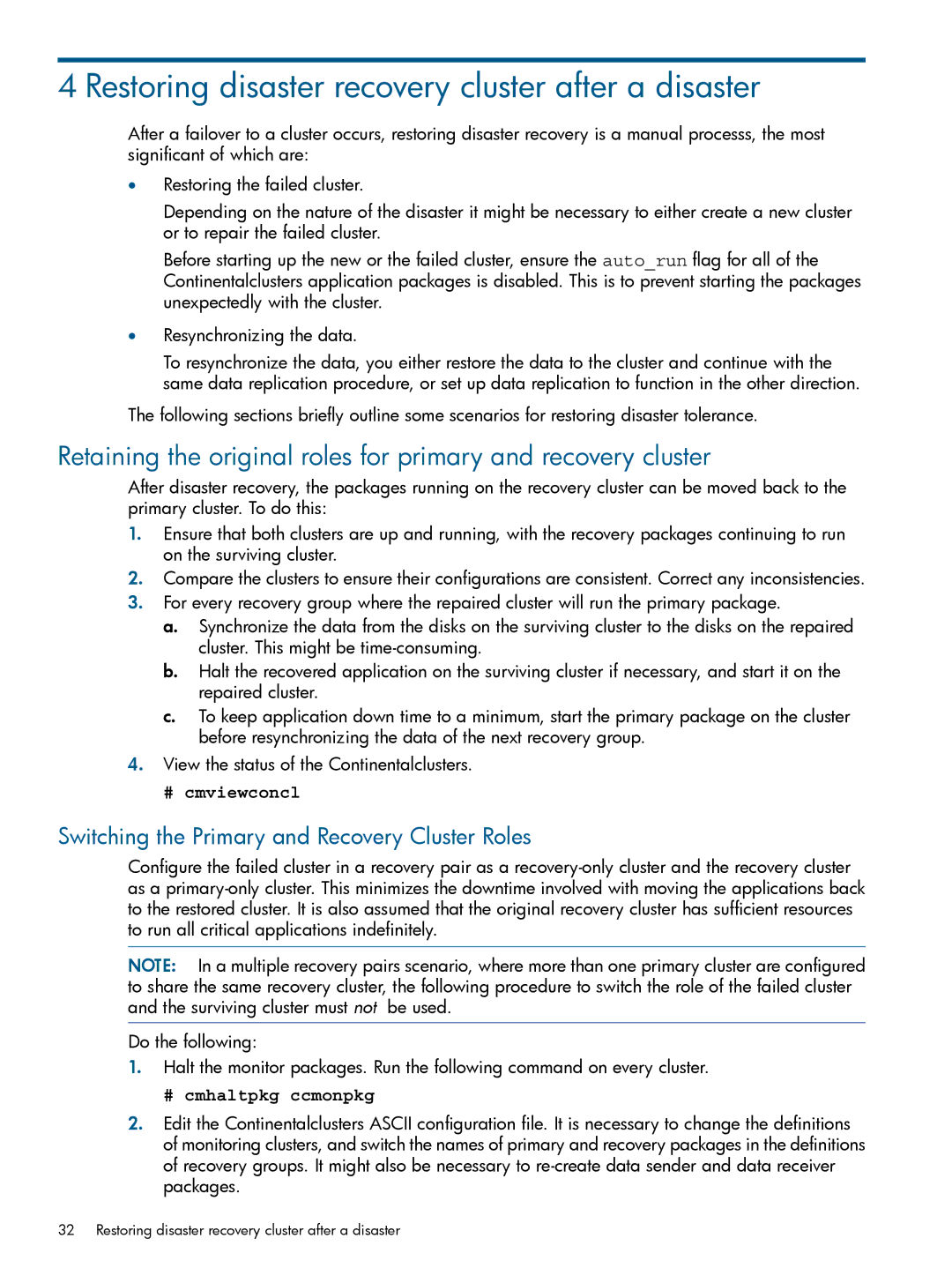
4 Restoring disaster recovery cluster after a disaster
After a failover to a cluster occurs, restoring disaster recovery is a manual processs, the most significant of which are:
•Restoring the failed cluster.
Depending on the nature of the disaster it might be necessary to either create a new cluster or to repair the failed cluster.
Before starting up the new or the failed cluster, ensure the auto_run flag for all of the Continentalclusters application packages is disabled. This is to prevent starting the packages unexpectedly with the cluster.
•Resynchronizing the data.
To resynchronize the data, you either restore the data to the cluster and continue with the same data replication procedure, or set up data replication to function in the other direction.
The following sections briefly outline some scenarios for restoring disaster tolerance.
Retaining the original roles for primary and recovery cluster
After disaster recovery, the packages running on the recovery cluster can be moved back to the primary cluster. To do this:
1.Ensure that both clusters are up and running, with the recovery packages continuing to run on the surviving cluster.
2.Compare the clusters to ensure their configurations are consistent. Correct any inconsistencies.
3.For every recovery group where the repaired cluster will run the primary package.
a.Synchronize the data from the disks on the surviving cluster to the disks on the repaired cluster. This might be
b.Halt the recovered application on the surviving cluster if necessary, and start it on the repaired cluster.
c.To keep application down time to a minimum, start the primary package on the cluster before resynchronizing the data of the next recovery group.
4.View the status of the Continentalclusters.
# cmviewconcl
Switching the Primary and Recovery Cluster Roles
Configure the failed cluster in a recovery pair as a
NOTE: In a multiple recovery pairs scenario, where more than one primary cluster are configured to share the same recovery cluster, the following procedure to switch the role of the failed cluster and the surviving cluster must not be used.
Do the following:
1.Halt the monitor packages. Run the following command on every cluster.
# cmhaltpkg ccmonpkg
2.Edit the Continentalclusters ASCII configuration file. It is necessary to change the definitions of monitoring clusters, and switch the names of primary and recovery packages in the definitions of recovery groups. It might also be necessary to
32 Restoring disaster recovery cluster after a disaster
